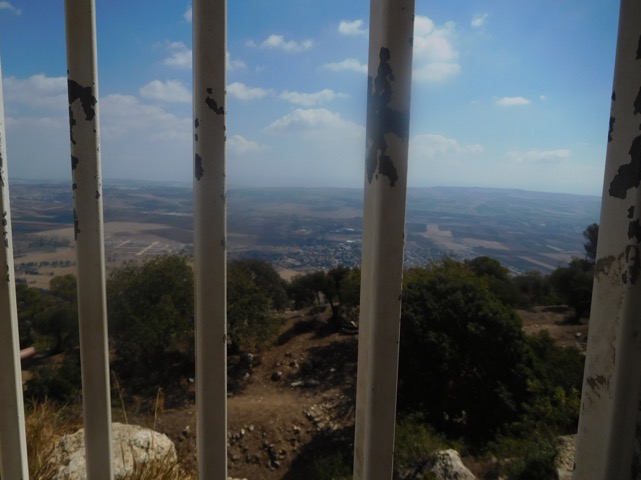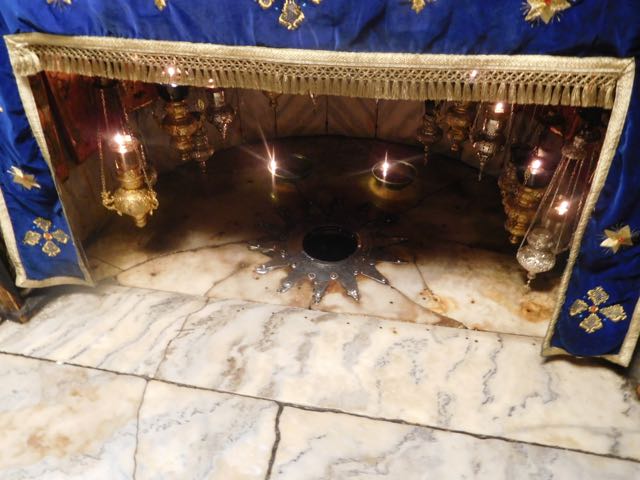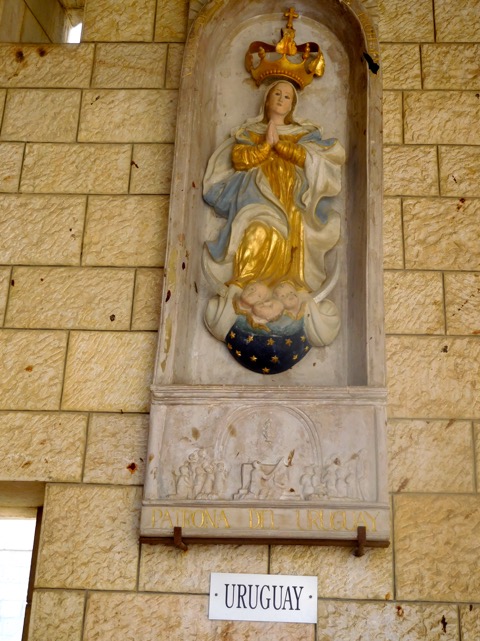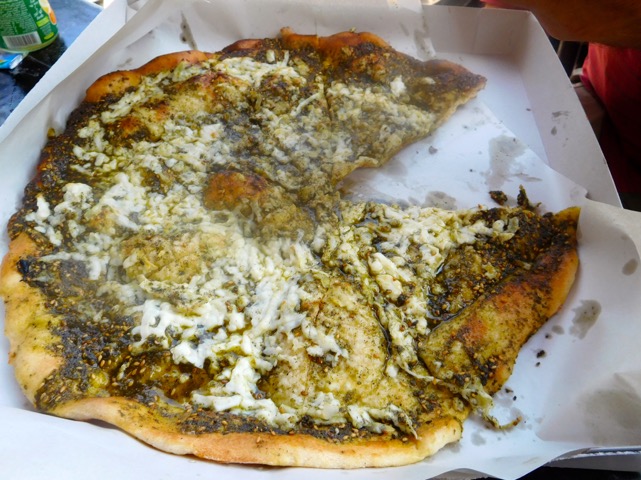It should have been at the beginning, but it came at the end: paying honor to two of the most important cities in the life of our Jesus: Bethlehem and Nazareth, one his birthplace (the back of the inn’s shed transformed into a typically grand and glorious Basilica) and the other the home of his youth, where Holy Mary has been honored with an extraordinary contemporary Minor Basilica of the Annunciation, built in 1969, placed where the annunciation is supposed to have occurred over ruins of an Byzantine and then a Crusader era church covering the same spot, which in addition allows us to see a piece of the cave home where Holy Mary grew up.
 Bethlehem, sweet Bethlehem, the city of David, Jesus’ birthplace, sacked by the Samaritans, rebuilt by Justinian; first, conquered by the Muslims, then the Mamluks, and given to the British for awhile; once part of Jordan, captured by Israel in the 1967 Six-Day War, yet still standing is Church of the Nativity in Manger Square protecting the birth spot and manger of the Holy Son of God. It is a Palestinian city in the West Bank and has had its political disturbances from the beginning, having been destroyed by Hadrian (emperor) and rebuilt by Empress Helena as well. What would we have done without that incredible saint!!
Bethlehem, sweet Bethlehem, the city of David, Jesus’ birthplace, sacked by the Samaritans, rebuilt by Justinian; first, conquered by the Muslims, then the Mamluks, and given to the British for awhile; once part of Jordan, captured by Israel in the 1967 Six-Day War, yet still standing is Church of the Nativity in Manger Square protecting the birth spot and manger of the Holy Son of God. It is a Palestinian city in the West Bank and has had its political disturbances from the beginning, having been destroyed by Hadrian (emperor) and rebuilt by Empress Helena as well. What would we have done without that incredible saint!!
Previously, when I visited in 1999, our study group from St. George’s College went to Bethlehem in the afternoon when tourist lines were so long it took hours to just see and touch the inlaid silver star “exact spot” where Jesus was born. An acquaintance suggested that I take a taxi from Jerusalem at 6 in the morning to be present when the Catholic priest gave his early morning mass and then I could walk around in silence. And I did. And it worked. But this time, I was told oh, no, cannot enter until 10 and I was not happy. But, in my schedule was the trip to Nazareth in the afternoon and so I held my breath. When we arrived at Manger Square, I was astounded. No lines. No wait. No people. Few tourist. This is the sad state of tourism today in Israel. So, I bent low like I was touching my toes, and entered the difficult gate into a dark basilica lit only by candles and the usual Orthodox chandeliers of flames hanging from the ceiling. Once the Orthodox deacon had finished lighting the hanging lamps candles for the day, I had Jesus all to myself. Stepping down into the underground chapel, lighting a candle, placing my hand on the star marking his birth place, and then on the now marble crib which has endured the centuries, Halleujah, was I happy! I wandered down into sort of an underground pit to visit St. Jerome’s library, cell, working space where he translated the Bible. All took place in a few minutes. And I was thankful.
The Minor Basilica of the Visitation in Nazareth is one of my favorite churches for on its walls inside and outside are extraordinary Marian devotions, works of art in mosaics of the Virgin Mary and child from all over the world. My challenge was to photograph every one, although a few of the giant ones inside were difficult. The Virgin and Child image has always fascinated me, though no one really knew Mary’s demeanor nor Christ’s appearance a a googling fat baby. But artists have grasped the idea, what it means to them, so we can trust and copy, maybe. Immediately I found Uruguay’s Virgin de Treinte-Tres, a statue of which my husband Sergio gave me on my ‘60th and it sits in my home gazing out at the Mississippi, longing to return, I fear, as I do to the simplicity of the life in Uruguay. Holy Mary’s basilica wasn’t crowded – it is so huge it would be difficult to feel cramped – only a sprinkling of tourists wandered through and many rested in the giant patio surrounded by walls filled with the Mother and Child images from nations all over the world. Spain, Italy and France had donated many more than one. Even Japan and China had their versions. And pilgrims and tourists from all over the world come to see if they can experience a miracle in this realm of Holy Mary.
Few holy places would be in existence today if Constantine the First had not, in the 4th century, sent his own Mother St. Helena, a role model for today’s archeologists, to build churches to mark important events in the life of Jesus. About the same time the first shrine was built in Nazareth, the Church of the Nativity in Bethlehem and the Church of the Holy Sepulchre in Jerusalem were also being built under St. Helena’s eye and hand. She also built the first chapel to St. Catherine of Alexandria in the deserts of Sinai in that same century.
Lunch on this day trip was at the equivalent of a pizza place but Muslim style which seemed to be patronized only by hungry Muslim men. It was small with a couple of tables on the sidewalk. And here I tasted the best substitute for a pizza ever made from a special bread Zathar and spread with olive oil, sesame seeds, and thyme and fresh white cheese. Yes, now and then, one longs for pizza.
Along the route between Jerusalem and Nazareth is the curious and beautiful Church of the Transfiguration poised atop Mount Tabor up which one motors in extreme zig-zag with tight curves going higher quickly before you get your “awe” breath back. When one reaches the top there is a peace that greets you in the parking lot while walking through the towering palm trees to the Church which is dedicated to Jesus’s moment with God on this mountain along with appearances by Elijah and Moses, while Peter fretted about building shelters or a retreat spot for the heavenly guests. The view is heavenly from every side and covers the area where the apocalypse is supposed to occur one day, in that valley rich with soil for produce, when Jesus returns to straighten us out. Down in the lower part of this church is a stained glass windows featuring two gorgeous peacocks. I’ve often wonder what that meant. Peacocks loose their feathers every year and they grow back – this is a symbol of rebirth. And they are found in Egyptian art as well as here on this hill of Jesus encounter with God.
Also on this route is a pass through Cana where the first miracle took place. It is just a congested town with the usual commercial activity – selling wine that has the Cana touch and is the worst you might want to drink, but maybe it’s good for a miracle. I didn’t test it.








